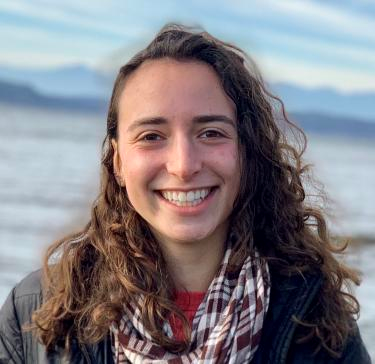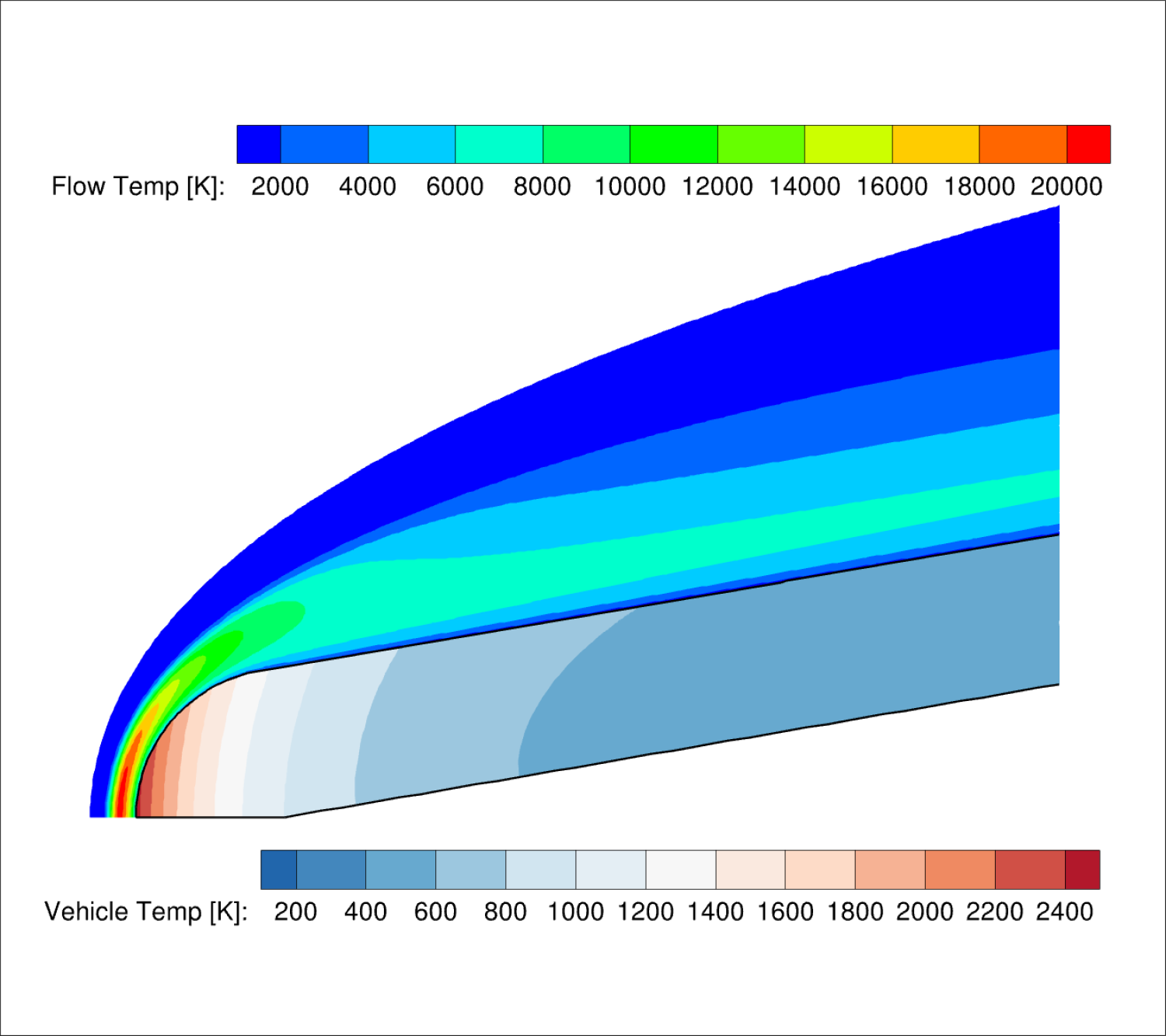Research on the edge – aerospace student pushing the boundaries of hypersonics

Jenny Horing has been poring over the latest results in her hypersonic flow and material response research, searching for clues in the data to better understand the next frontier in high-speed thermodynamics.
Much of the work involves conducting complex simulations on advanced supercomputers.
An aerospace PhD student and Smead Scholar at the University of Colorado Boulder, Horing is studying how air and other elements in the atmosphere interact with materials that will be used to build the next generation of space capsules and other vehicles that travel at hypersonic speeds – which is at least five times the speed of sound.
“It’s very interdisciplinary work,” Horing said. “There’s aerodynamics; thermodynamics; chemistry; materials response; structural response; and guidance, navigation, and controls. It’s a really, really interesting topic. When I first started reading papers on hypersonics, I just loved it and knew this is what I wanted to do.”
While few members of the public have access to supercomputers, they are part of Horing’s regular research.
“I’ve always been inclined to sit behind my computer,” Horing said. “I like looking at the numbers and seeing how things connect through the math. I use CU Boulder’s supercomputer and my research is also connected to Lawrence Livermore National Laboratory, so I have access to their supercomputer as well.”
Horing earned her bachelor’s degree in mechanical engineering at Harvard, and then moved into industry. She spent two years at Blue Origin working as an aerospace engineer, but always knew she would go back for her PhD. In 2020, she started studying at CU Boulder under the guidance of Professor Iain Boyd, who is a leading researcher in hypersonic aerothermodynamics.

A visualization of some of Horing's research, showing computational fluid dynamics and material response results of a leading edge in hypersonic flow at a specific point along the trajectory. The diagram displays the temperature profile within a flow field (the rainbow portion) and within the leading edge (the darker blue/red).
During hypersonic flight, the temperature of air and other gases around a vehicle can reach thousands of degrees, triggering chemical reactions. Despite recent developments in vehicle design, there are still major gaps in our understanding of the underlying physics.
Those knowledge gaps can make Horing’s work especially challenging and exciting, as she is truly breaking new ground.
"I'm looking at the impacts of the flow field and material response on the structural response of the vehicle along a trajectory and I’ll want to read papers on it, but there aren’t any papers on this yet,” Horing said. “It’s cool to see I’m pushing the limit, but it also makes it difficult as obviously I’m just learning too. There’s an interesting balance of what can I learn from others and what can I make myself.”
Hypersonics is an active area of research around the world, particularly for national defense purposes. Horing is especially drawn to it as a new scientific frontier. Only a few nations have tested powered hypersonic vehicles, and there are major scientific questions still to be answered.
“I care about the engineering side of it and all the interesting science,” Horing said. “We also need to know the flow field response and the structural response of a vehicle to keep the person inside or the payload inside safe.”
She hopes to eventually see commercial hypersonic flights for travel purposes but acknowledges that is a ways off in the future.
With about three years left in her PhD, Horing is leaning toward going back into the private sector after graduation. As interest in hypersonics continues to grow, there will be no shortage of career options, but the industry is evolving so quickly it is hard to know what the future will bring.
“I definitely enjoy industry a lot,” Horing said. “It’s a little faster paced. I especially love startups. You get to wear a lot of different hats. But it’s very hard to know what will be out there in 2025. So much is changing every day.”

